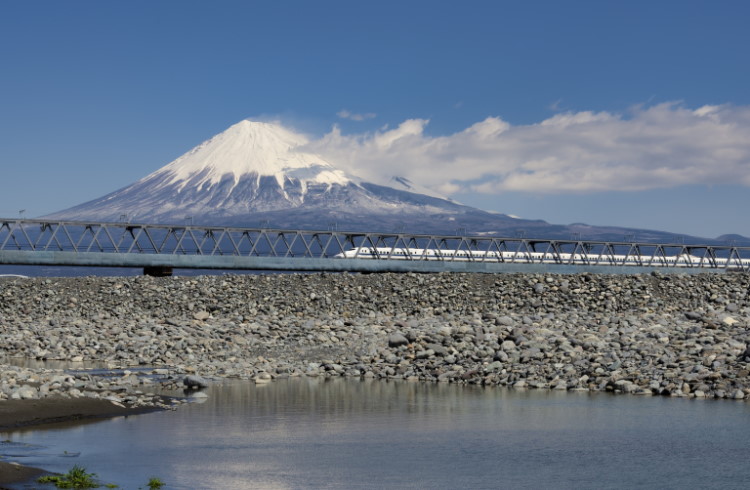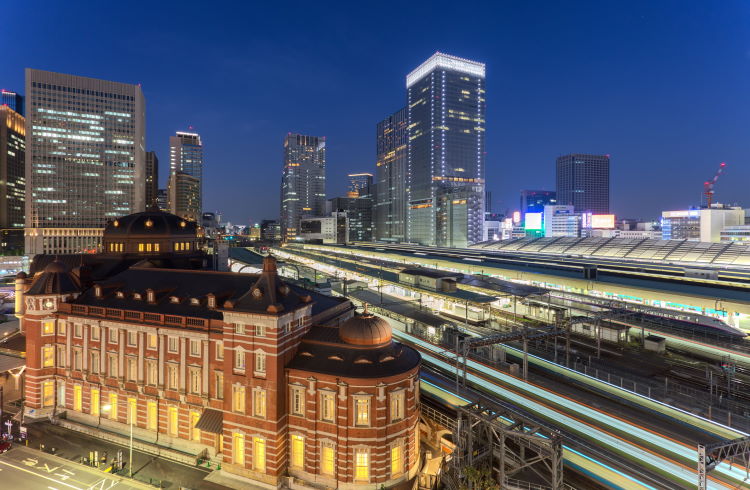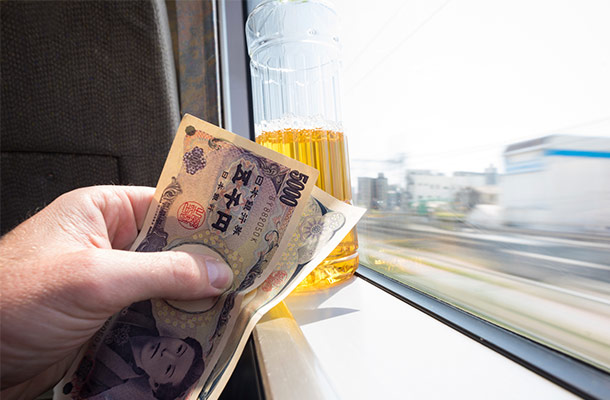A Guide to Riding the Shinkansen Bullet Trains in Japan
Getting around Japan is simple and fast traveling via Shinkansen, the high-speed train service connecting major cities throughout the country. Nomad Jessica shares her tips.
 Photo © Getty Images / Yuga Kurita
Photo © Getty Images / Yuga Kurita
Japan is one of my favorite countries to visit. I first fell in love with it while living in Okinawa almost 20 years ago. The food and culture attracted me to the country and gave me the desire to learn more. On my subsequent trips, I made it a point to visit different cities such as Kobe, Kyoto, and Tokyo, and my love for the destination grew more profound.
When Japan reopened its doors to individual tourists in October 2022 after more than two years of COVID-19 restrictions, I took the opportunity to visit, my first trip back in six years. This time, I was able to explore beyond Tokyo and head to Fukui and Ishikawa Prefecture, located on the west coast of central Japan. I visited destinations less well-known to Western tourists – such as Shimojohoji, Fukui, and Kanazawa – while on a tour about traditional Japanese fermentation techniques led by Takashi Sato, the owner of San-J soy sauce company. We visited sake, koji, and soy sauce producers and ate lots of sushi along the way. I learned so much about traditional food and sampled delicious regional cuisine. Afterward, I treated myself to a solo trip to Osaka to eat and decompress from group travel.
Getting around Japan can seem a bit daunting, especially if it's your first visit. However, a little research and planning will take a long way and save you money. Here are some tips on how to travel via Shinkansen and take advantage of flight deals only offered to tourists traveling across Japan for a limited time.
- What is the Shinkansen?
- What is it like to travel by Shinkansen?
- How much do Shinkansen tickets cost?
- Low-cost flying in Japan
What is the Shinkansen?
Shinkansen (bullet trains) are Japan's fastest and easiest way to get around. There's an extensive train network across the country, and the trains reach a top speed of 199mph (320kph), taking you cross-country in no time. Beyond the Shinkansen, there are semi-fast and local trains that take you to smaller cities and towns. There are nine Shinkansen lines, divided by regions under Japan Rail and managed by the different regional lines.
What is it like to travel by Shinkansen?
Once I traveled by Shinkansen, I found it hard to travel with other train services around the world because it's so clean, efficient, and convenient. My first time taking the bullet train, I was five months pregnant with my daughter, and we traveled from Kyoto to Tokyo. I appreciated the legroom, plenty of space to store the luggage, and the attendants selling snacks. My husband is 6'9" (206cm) and constantly struggles with legroom on trains and planes, and he was pleasantly surprised with the comfort of the Shinkansen.
Also, most big train stations in Japan are large shopping hubs with tons of great restaurants and shops, so make some time to explore the train station. On my most recent trip, we traveled from Fukui to Tokyo and had a fantastic dinner at a sake bar selling artisanal sake bottles from the region. There were also other food stands, smaller shops, a department store, and a small supermarket to load up on snacks. Whether in a smaller destination like Kobe or Fukui or a large one like Tokyo, all stations are spotless and orderly and have a range of dining options.
Although Japan lifted the tourist travel ban that was in effect due to COVID-19, people are required to use masks in public places, especially public transportation. If you forgot to pack masks, that’s fine as you can buy masks everywhere from convenience stores to luxury department stores.

How much do Shinkansen tickets cost?
The cost depends on the location and time of purchase. Prices usually range from approximately US $75 to US $150, depending on the exchange rate. If you're planning to travel around Japan, purchase a Japan Rail pass. The passes are seven days for US $225, 14 days for US $345, and 21 days for $445 (prices fluctuate with the exchange rate).
Regional carriers such as Japan Rail West and Japan Rail East also offer passes tailored explicitly for foreign tourists for as low as US $150 for a five-day pass for specific regions in the country. These regional passes also provide discounts to tourist attractions at the destinations. To obtain these passes, travelers must present their passports to confirm their tourist status.
Purchasing tickets online can be confusing even for an experienced traveler if you don’t speak Japanese. However, you can easily buy tickets at the train stations without reservations. I purchased my first Shinkansen tickets this way, and it was quick and easy. You can also buy tickets online via the different regional Japan Rail providers.
Low-cost flying in Japan
Aside from traveling via Shinkansen, traveling via plane across Japan is also convenient and competitively priced. Japan Airlines offers a Japan Explorer Pass that only foreign tourists can purchase online, and you can get domestic tickets as low as US $45 one way. This is an excellent option if you visit islands like Okinawa or farther-flung destinations like Sapporo. Also, low-cost carriers like Peach and Jetstar sell affordable plane tickets. Although the prices may look cheaper than the train, make sure to factor in train tickets or taxi fares to/from the airport, arrival time to the airport, and luggage restrictions. After all, one of the highlights of traveling across Japan via Shinkansen is the convenience and comfort (not to mention being easier on the environment).
Related articles
Simple and flexible travel insurance
You can buy at home or while traveling, and claim online from anywhere in the world. With 150+ adventure activities covered and 24/7 emergency assistance.
Get a quote

1 Comment
Why do you quote speed in mph first? Why use mph at all, hardly any of the world uses it?